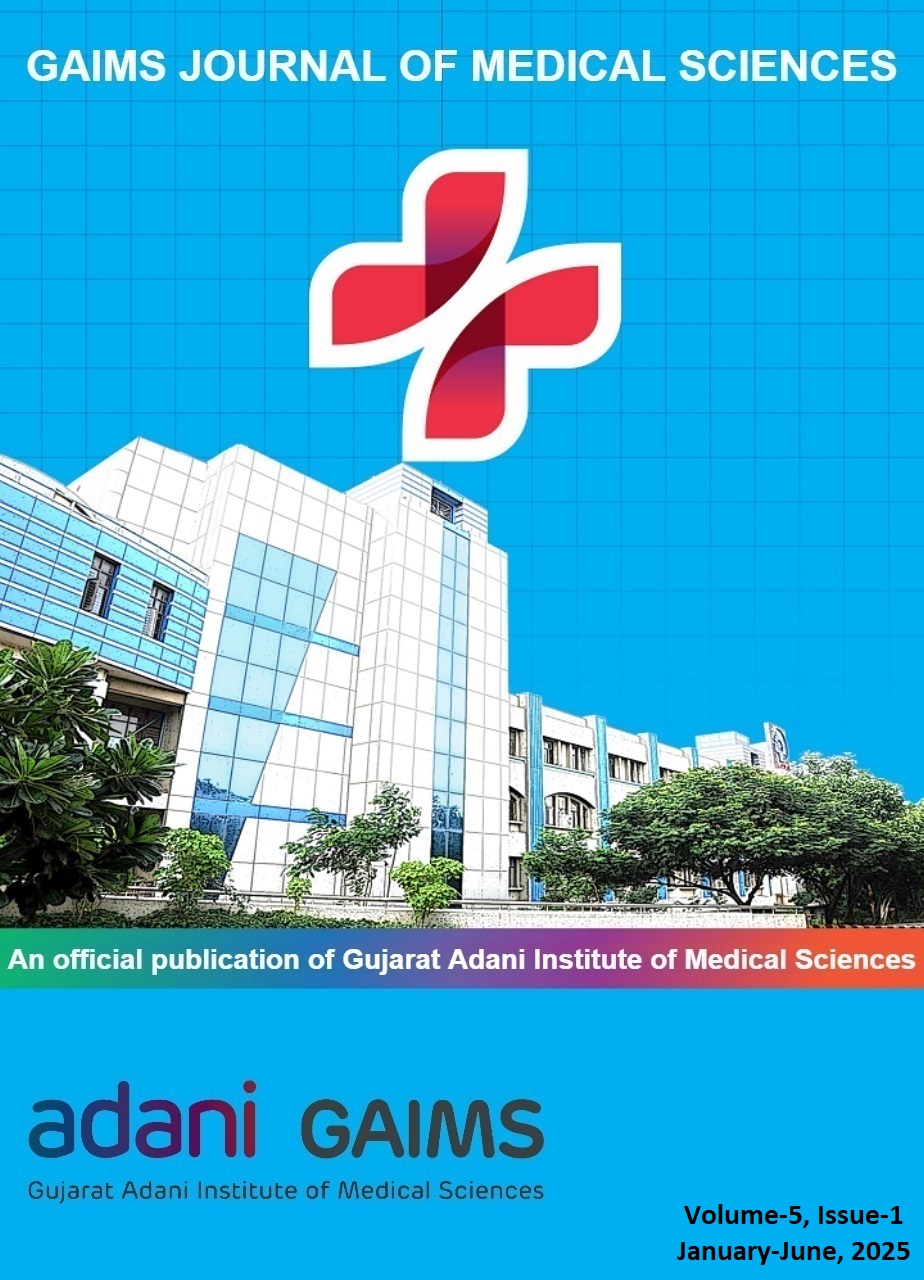Rare Type 4 Hiatal Hernia: An Incidental Cadaveric Discovery
Keywords:
Hiatal Hernia, Esophageal Hiatus, Phreno-esophageal Ligament, Gastric VolvulusAbstract
A hiatal hernia (HH) occurs when a portion of the stomach slides up into the thorax through the esophageal hiatus of the diaphragm. Most of these hernias are acquired and result from factors which increase the intra-abdominal pressure resulting in laxity of phreno-esophageal ligament and an increase in size of the esophageal hiatus. HHs are classified into 4 types. Type-1 HH is the commonest and frequently associated with gastroesophageal reflux disease (GERD). Type-4 HH is rare and is prone to develop mechanical complications such as gastric volvulus and obstruction. Awareness and early diagnosis and treatment of these complications can reduce morbidity and mortality and ensure a positive outcome.
Downloads
Published
Issue
Section
License
Copyright (c) 2025 Sagnik Roy, Nivedita Roy

This work is licensed under a Creative Commons Attribution-NonCommercial-ShareAlike 4.0 International License.








